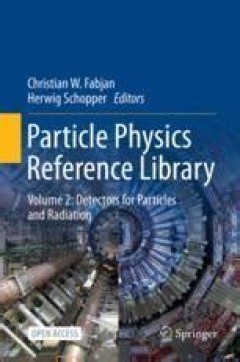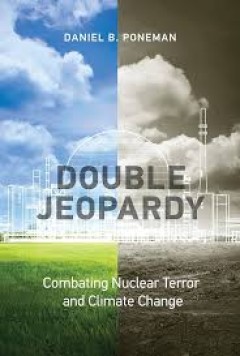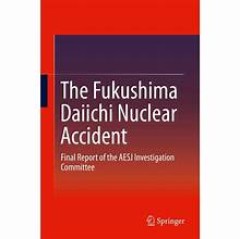Filter by

Reactor Laboratory Experiments at Kyoto University Critical Assembly
This open access is an educational text on reactor physics experiments and is described based on a careful examination of the contents and pedagogical benefits obtained from the book Nuclear Reactor Physics Experiments by T. Misawa, H. Unesaki, and C. H. Pyeon (2010) from Kyoto University Press, Japan. The current volume comprehensively covers basic and applied topics on experiment using nuclea…
- Edition
- 1
- ISBN/ISSN
- 9789819780709
- Collation
- XIV, 255 hlm; ill., lamp.,
- Series Title
- -
- Call Number
- -

Particle Physics Reference Library = Volume 2: Detectors for Particles and R…
This second open access volume of the handbook series deals with detectors, large experimental facilities and data handling, both for accelerator and non-accelerator based experiments. It also covers applications in medicine and life sciences. A joint CERN-Springer initiative, the “Particle Physics Reference Library” provides revised and updated contributions based on previously publishe…
- Edition
- 1
- ISBN/ISSN
- 9783030353186
- Collation
- IX, 1078 hlm; ill., lamp.,
- Series Title
- -
- Call Number
- -

Nuclear Risks and Arms Control - Problems and Progresses in the Time of Pande…
This open access book is based on the conference organised by Accademia dei Lincei and the US National Academy of Sciences and supported by the Italian Ministero degli Affari Esteri. It was attended by about 60 scientists and researchers from 13 countries, including, besides Europe, Iran, Israel, Iraq, Pakistan, India, Japan, Russian Federation and the USA. In an international scenario shaken b…
- Edition
- 1
- ISBN/ISSN
- 978-3-031-29708-3
- Collation
- XVI, 212
- Series Title
- -
- Call Number
- -

Introduction to Nuclear Reactor Experiments
This open access book is a pedagogical text on nuclear reactor experiments, covering almost all the experiments that can be carried out at the University Training Reactor, Kindai University (UTR-KINKI) with respect to reactor physics and radiation detection, and additionally including academic materials of test and research reactors, nuclear instrumentation, nuclear laws and regulations, in thi…
- Edition
- 1
- ISBN/ISSN
- 978-981-19-6589-0
- Collation
- -
- Series Title
- -
- Call Number
- XI, 166

Producing power :the pre-Chernobyl history of the Soviet nuclear industry
An examination of how the technical choices, social hierarchies, economic structures, and political dynamics shaped the Soviet nuclear industry leading up to Chernobyl.OCLC-licensed vendor bibliographic record.
- Edition
- -
- ISBN/ISSN
- 9780262321792
- Collation
- 1 online resource (xxxi, 362 pages) :illustrations.
- Series Title
- -
- Call Number
- -

Double jeopardy :combating nuclear terror and climate change
Making the case that we can use nuclear power to combat climate change even as we reduce the risks of nuclear terror. Humanity faces two existential threats: nuclear annihilation and catastrophic climate change. Both have human origins, and both are linked to the use of nuclear energy. Inherent in the use of atomic fission is the risk that the technology and materials can be diverted to terrori…
- Edition
- -
- ISBN/ISSN
- 9780262353687
- Collation
- 1 online resource (288 pages) :illustrations.
- Series Title
- -
- Call Number
- -

Transforming nuclear safeguards culturethe IAEA, Iraq, and the future of non-…
The role of organizational culture in international efforts to stop the spread of nuclear weapons.In Transforming Nuclear Safeguards Culture, Trevor Findlay investigates the role that organizational culture may play in preventing the spread of nuclear weapons, examining particularly how it affects the nuclear safeguards system of the International Atomic Energy Agency (IAEA), the paramount glob…
- Edition
- -
- ISBN/ISSN
- 9780262369763
- Collation
- 1 online resource.
- Series Title
- -
- Call Number
- -

Nuclear choices for the twenty-first century :a citizen's guide
"Citizen's guide to making informed choices about nuclear technologies, energy, and weapons"--OCLC-licensed vendor bibliographic record.
- Edition
- -
- ISBN/ISSN
- 026236302X
- Collation
- 1 online resource.
- Series Title
- -
- Call Number
- -

Reflections on the Fukushima Daiichi Nuclear Accident
This book focuses on nuclear engineering education in the post-Fukushima era. It was edited by the organizers of the summer school held in August 2011 in University of California, Berkeley, as part of a collaborative program between the University of Tokyo and UC Berkeley. Motivated by the particular relevance and importance of social-scientific approaches to various crucial aspects of nuclear …
- Edition
- -
- ISBN/ISSN
- -
- Collation
- -
- Series Title
- -
- Call Number
- -

The Fukushima Daiichi Nuclear Accident
The Magnitude 9 Great East Japan Earthquake on March 11, 2011, followed by a massive tsunami struck TEPCO’s Fukushima Daiichi Nuclear Power Station and triggered an unprecedented core melt/severe accident in Units 1 – 3. The radioactivity release led to the evacuation of local residents, many of whom still have not been able to return to their homes. As a group of nuclear experts, the A…
- Edition
- 1
- ISBN/ISSN
- 978-4-431-55160-7
- Collation
- XII, 560, 31 b/w illustrations, 55 illustrations in colour
- Series Title
- -
- Call Number
- -
 Computer Science, Information & General Works
Computer Science, Information & General Works  Philosophy & Psychology
Philosophy & Psychology  Religion
Religion  Social Sciences
Social Sciences  Language
Language  Pure Science
Pure Science  Applied Sciences
Applied Sciences  Art & Recreation
Art & Recreation  Literature
Literature  History & Geography
History & Geography